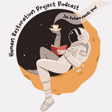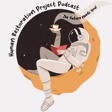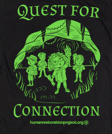Become a Creator today!Start creating today - Share your story with the world!
Start for free
00:00:00
00:00:01

31: Restoring Humanity to Discipline (Restorative Justice)
Restoring Humanity are short(ish) segments on understanding a key idea of progressive education. This time, we're tackling discipline! What are the roots of our discipline system, what issues exist, and how can we solve them?
We also cite:
- William Bagley's Classroom Management (1908)
- School Discipline in Public Education (2011)
- For Public Schools, Segregation Then, Segregation Since (2013)
- How Racial Bias Affects the Quality of Black Students' Education (2016)
- The Trevor Project: Facts About Suicide (n.d.)
- Effective Discipline for Misbehavior: In School vs. Out of School Suspension (n.d.)
- ACLU: School to Prison Pipeline (n.d.)
Transcript
Introduction to 'Restoring Humanity' and Acknowledgements
00:00:09
Speaker
Hello, and welcome to the latest episode of Restoring Humanity from the Human Restoration Project.
00:00:15
Speaker
My name is Chris.
00:00:16
Speaker
Thanks for joining me today.
00:00:17
Speaker
Restoring Humanity is a sub series of our podcast where we talk about a specific progressive idea.
00:00:22
Speaker
It's history, research and implementation into a school.
00:00:26
Speaker
But before we get started, a special thank you to Jenny Lucas and Annette Laughlin for being patrons.
Historical Context of Discipline in Education
00:00:31
Speaker
Our Patreon supporters keep this podcast
00:00:33
Speaker
as well as all of the great materials and research on our website alive.
00:00:36
Speaker
You can find out more about us and find a wealth of information on our website at humanrestorationproject.org.
00:00:48
Speaker
It is necessary to use the rod.
00:00:50
Speaker
The first application is sometimes looked upon by the pupil only as a test.
00:00:54
Speaker
He may accept it graciously and still persist in the undesired act.
00:00:58
Speaker
It may take several applications firmly to associate the act with an unpleasant consequence.
00:01:03
Speaker
But in time, the pupil will come to understand the teacher must be obeyed.
Zero-Tolerance vs. Restorative Justice
00:01:09
Speaker
These are instructions from William Bagley's Classroom Management, a widely used teacher training manual from 1907.
00:01:14
Speaker
Today, we're talking about discipline and what a profound difference we can make by incorporating restorative justice practice over traditional zero-tolerance policies.
00:01:24
Speaker
First, we should define what these two things are.
00:01:27
Speaker
A zero-tolerance policy is a disciplinary measure where one typically gives a very harsh penalty automatically to someone who breaks a certain rule.
00:01:35
Speaker
For example, a student handbook says that if one steals something, they're automatically suspended for seven days.
00:01:40
Speaker
Or if someone's late to class 10 days in a row, they have an after-school detention.
00:01:44
Speaker
Restorative justice, which we'll define a lot more later, is simply stated a way to rehabilitate those causing problems, rather than simply imposing a sentence.
00:01:53
Speaker
For example, if someone is stealing something, figuring out why they're stealing something and what remedial action is justified.
00:02:00
Speaker
Or if someone's late to class, figuring out why they're late to class and why that constantly is going on.
00:02:05
Speaker
Both of these terms are also utilized in the criminal justice system and we'll note how they connect throughout.
00:02:10
Speaker
It should be obvious to anyone that children will act out.
00:02:13
Speaker
Since the beginning of schooling, children have simply goofed off to committed felonies.
00:02:17
Speaker
The way that we address these issues has changed over time, albeit not as much as you might think.
00:02:23
Speaker
When we trace back early disciplinary policy to the 1800s, it is probably what most people think of, using a paddle, rod, or some device to hurt pupils and get them to obey, and that's quite accurate.
00:02:34
Speaker
This practice, corporal punishment, is mirrored with public floggings or, really, executions to discourage behavior from the perpetrator as well as those who dare to do that action.
00:02:44
Speaker
Students got in trouble in similar ways to today, usually profanity, disrespecting a teacher, or some kind of physical aggression.
00:02:51
Speaker
Corporal punishment was widely used, however, many educators did reject it.
00:02:55
Speaker
Horace Mann, one of the original proponents for common schools, was shocked at Prussia's system of handling its students.
00:03:01
Speaker
He remarked on how little the rod was used in controlling students, and kids just listened because the content was
Racial Inequality in School Discipline
00:03:08
Speaker
interesting.
00:03:08
Speaker
And he was really surprised by it and thought, well, let's make schools actually more engaging.
00:03:14
Speaker
so that these discipline measures don't have to happen.
00:03:16
Speaker
That being said, depending on where you teach, you might be surprised to know that even 150 years later, corporate punishment is still heavily utilized.
00:03:25
Speaker
Although it's definitely less widespread, the Education Week Research Center found 109,000 students were victim to paddling, swatting, or some form of physical punishment in the 2013-2014 school year.
00:03:38
Speaker
This form of punishment was two times more likely for African Americans
00:03:43
Speaker
And we'll talk about that more in a second.
00:03:45
Speaker
In terms of the shift of punishment in the 1960s, out-of-school suspensions became the new resolve to dealing with misacting kids.
00:03:53
Speaker
After all, there's no easier way to solve a disciplinary problem than out of sight, out of mind.
00:03:58
Speaker
Soon after, the education community became concerned that when we send all these children home, that would just cause more problems at home and students still wouldn't be learning anything.
00:04:08
Speaker
So, in 1976, DM O'Brien was one of the first to outline a new system of in-school suspensions.
00:04:15
Speaker
He stated that the goal of the program was for students to accept the consequences of their actions and to think about what they were doing and why it was wrong.
00:04:22
Speaker
Despite research from then and now showcasing that suspensions, whether they're inside or outside of school, actually lead to more disciplinary problems, the most common reprimand being used even today is a suspension.
00:04:35
Speaker
And to add, for the most extreme problems, regardless of what time period we're looking at, there is always expulsion as an option.
00:04:42
Speaker
No matter what way we look at this, there's no way to talk about discipline without talking explicitly about race.
00:04:48
Speaker
From the limited data supplied from segregated schools, it seems as if discipline rates were roughly the same across black and white schools.
00:04:55
Speaker
However, after Brown v. Board of Education in 1954,
00:05:00
Speaker
It quickly became clear that students of color were much more likely to receive punishment.
00:05:04
Speaker
As written about extensively by author and professor Bell Hooks, after desegregation, black students became targeted by white teachers who judged, labeled, and demeaned them.
00:05:14
Speaker
Shockingly, students are actually more segregated now than they were 40 years ago.
00:05:18
Speaker
As many are aware, when George Wallace renounced Brown v. Board of Education, he stated, quote, I draw the line in the dust and toss the gauntlet before the feet of tyranny.
00:05:28
Speaker
And I say segregation now, segregation tomorrow, and segregation forever.
00:05:32
Speaker
Chillingly, these words are the reality of school districts.
00:05:36
Speaker
Practices of redlining, white flight, economic manipulation, hiring practices, systemic criminal justice issues, and more have placed many burdens on African Americans.
00:05:45
Speaker
And it's not uncommon for inner-city schools to be almost entirely children of color.
00:05:50
Speaker
And these students, those with some of the hardest economic backgrounds, face immense pressure at school and at home.
00:05:56
Speaker
In an effort to, and I say this in quotes, educate inner-city students, mostly for-profit charter schools have promised communities to put children into colleges.
00:06:06
Speaker
Sadly, these institutions only reinforce low levels of regurgitated information and reinforce control over all else.
00:06:14
Speaker
Seeing students of color as lowly as many white teachers did in the 1960s, charter schools suspend black students at four times the rate of white students.
00:06:23
Speaker
In one Stanford study, it was revealed that teachers tend to judge black students' infractions more severely regardless of what school they're at.
00:06:30
Speaker
And for very poor districts, which again remain heavily racially segregated,
00:06:35
Speaker
Discipline is just one issue of systemic oppression, economic collapse, poor health, and high crime.
Critique of Current Discipline Models
00:06:41
Speaker
In Jonathan Kozl's eye-opening accounts of savage inequalities, he highlights the disparate nature of low-income schools, where gang violence is real and even basic school furnishings are absent.
00:06:51
Speaker
In these schools, discipline is not even as focused on as the high dropout rate.
00:06:55
Speaker
Moving into the ways of trying to fix these problems today, whether it be an inner-city school or suburban school or any kind of school,
00:07:02
Speaker
Much of fixing school discipline is mirrored with that of law enforcement.
00:07:07
Speaker
In the 1980s, coming out of the racially charged War on Drugs movement, the idea of zero-tolerance policies began to be utilized.
00:07:14
Speaker
In a move that would institutionalize large portions of mostly minority communities, zero-tolerance policies put extreme punishment on many offenses, notably laws surrounding marijuana, which was targeted in cities.
00:07:26
Speaker
For schools, zero tolerance took aim at drug possession, gang activity, and possession of weapons.
00:07:32
Speaker
However, in the late 1980s and through today, this has been expanded to tobacco use, school disruption, and various less serious behaviors.
00:07:40
Speaker
In 2001, after zero tolerance was adopted in Chicago public schools, out-of-school suspensions rose 51%, with primarily African American and Hispanic students being targeted.
00:07:51
Speaker
When surveyed, 69% of these students did not believe the suspensions would do much and 55% of them were angry at the person that suspended them.
00:08:00
Speaker
Notably, No Child Left Behind developed zero tolerance further.
00:08:03
Speaker
The law stated that states must quote, "...adopt a zero tolerance policy that empowers teachers to remove violent or persistently disruptive students from the classroom."
00:08:13
Speaker
Although I'm sure we're all on the same page that guns and drugs should not be in our classrooms,
00:08:18
Speaker
the varying degrees of what constitutes a disruptive student and how far we should go is worrisome.
00:08:24
Speaker
Paired with the push of zero-tolerance policies is also the growing concern of a school-to-prison pipeline, which again heavily mirrors policies that target the historically oppressed.
00:08:34
Speaker
Not only have punishments been readily given, but police are now actively involved.
00:08:38
Speaker
According to the ACLU, 31% of African-American students are arrested from something that happened at school, whereas only 16% of African-Americans make up the public school system.
00:08:48
Speaker
That's three times the rate of white students.
00:08:51
Speaker
Troublingly, students who are suspended or expelled are three times more likely to be involved with the juvenile justice system within the following year.
00:08:59
Speaker
So, not only are these policies unjust, they're just not working.
00:09:04
Speaker
In 1998, the National Center for Education Statistics surveyed which schools had adopted zero-tolerance policies and how many students were suspended or expelled.
00:09:14
Speaker
And in 2003, they gave the same survey and they found that the numbers had not changed to a measurable degree.
00:09:19
Speaker
In other words, when these schools adopted zero tolerance policies roughly five years earlier, they found that it had absolutely no determined effect on students being sentenced.
00:09:31
Speaker
So perhaps the system isn't working.
00:09:33
Speaker
In the same way that we have massive prisoner recidivism rates, maybe our school systems are just remaining ignorant of major systemic problems.
00:09:41
Speaker
All in all, discipline policy has doubled down the United States.
Principles of Restorative Justice
00:09:44
Speaker
Despite a decrease in physical violence toward children, our tactics have arguably become more extreme.
00:09:50
Speaker
Zero tolerance is still alive and going strong in 2018, and it's a common school policy to isolate and remove students from the classroom who break a code from the handbook, reach a certain number of strikes, or who have some instance of acting out.
00:10:08
Speaker
In response to the inhumane idea of zero tolerance, reformers of the late 20th century developed a framework for restorative justice.
00:10:15
Speaker
Initially focused on removing the blanket sentencing of criminals, this policy too was brought into the fold of education.
00:10:22
Speaker
In summary, restorative justice focuses on four key elements.
00:10:26
Speaker
One, attempting to remedy the problem by communicating with the perceived aggressor and empowering the victim to share their perspective.
00:10:33
Speaker
2.
00:10:34
Speaker
The aggressor is made aware of the issue that they've caused in an explicit and open dialogue and is encouraged to take ownership of that problem.
00:10:41
Speaker
3.
00:10:42
Speaker
With a focus on reconciliation, the victim isn't forced to forgive anyone, but the aggressor does have the opportunity to make amends.
00:10:49
Speaker
4.
00:10:50
Speaker
The victim is constantly involved in the process as much as they'd like to be.
00:10:54
Speaker
I'm sure that for most of us, this is not common practice in our building.
00:10:58
Speaker
Usually if a problem ever occurred in my classroom, it would look something like, okay, there's a student causing a problem.
00:11:03
Speaker
I send them to the office.
00:11:05
Speaker
The office gives them a warning or a suspension or something worse.
00:11:09
Speaker
and then I don't really think about it anymore.
00:11:11
Speaker
And in this case, ignorance is bliss.
00:11:13
Speaker
It doesn't take a research study, although there are many, to demonstrate that students rarely stop acting inappropriately when sent to the office.
00:11:20
Speaker
Although fights, theft, and other crimes are dangerous and deserve to be taken seriously, the act of suspending, or worse, arresting, a child tends to lead to more problems than it creates.
00:11:31
Speaker
Restorative justice is often misinterpreted.
00:11:33
Speaker
It is not a substitute for punishment, but a different way of analyzing a situation.
00:11:38
Speaker
It's all about mindset.
00:11:39
Speaker
Obviously, major offenses still warrant major action.
00:11:42
Speaker
The goal of restorative justice at its heart is to reallocate the aggressor from feeling resentment, which tends to stem from isolation and poor emotional well-being to that of reflection and acceptance of the actions that they took.
00:11:56
Speaker
The truth is, if we isolate a student when they do something wrong,
00:11:59
Speaker
We tend to just make them more socially
Implementing Restorative Justice in Schools
00:12:01
Speaker
and emotionally resentful.
00:12:02
Speaker
It doesn't solve any of their problems, it actually makes things much worse.
00:12:06
Speaker
Sure, in the short term we've solved the problem for the victim, to an extent we've removed it, but all children are ours in the education system, even those who do things wrong.
00:12:16
Speaker
They deserve help just as much as the rest of us.
00:12:18
Speaker
Therefore, the interpretation that restorative justice is less serious than zero tolerance is misguided.
00:12:24
Speaker
In fact, we spend a lot more time on every single issue
00:12:27
Speaker
when we try to remedy a problem.
00:12:29
Speaker
At its core, the practice of restorative justice is based in empathy.
00:12:33
Speaker
By understanding the aggressor, as well as the victim, we can encourage responsible actions in the future.
00:12:39
Speaker
We want to make the aggressor a caring individual whose issues are alleviated, while simultaneously ensuring that the victim is empowered and the problems are rectified.
00:12:48
Speaker
So to tie this all together and put it into perspective, consider this scenario.
00:12:52
Speaker
A student who will call Rob stole another student named Aya's phone.
00:12:57
Speaker
Aya tells you, as a teacher, that she knows Rob has it in her backpack.
00:13:02
Speaker
You go talk to Rob and he says he doesn't have it.
00:13:05
Speaker
So you go tell administration, they confiscate his stuff, and they find the phone.
00:13:10
Speaker
In a traditional education system, which most of us teach in, Rob would probably be instantly suspended, or at least isolated and yelled at by a disciplinarian.
00:13:18
Speaker
He would be lectured for doing something wrong, Aya would get her phone back, and depending on the school and what Rob has done before, he could possibly be arrested.
00:13:27
Speaker
The difference in a restorative mindset would be that first, Rob would be invited to the office to explain what's going on.
00:13:33
Speaker
The administration would not scold them, lecture them, threaten.
00:13:36
Speaker
Instead, they would explain how his actions have affected Aya.
00:13:40
Speaker
After a considerable amount of time trying to open communication, and it will take a lot given the level of distrust of students and many of their superiors, the administration will find out why Rob has Aya's phone.
00:13:52
Speaker
Likely, at least in my anecdotal evidence of how students take each other's phones, Rob probably wants attention from other people or maybe even Aya.
00:14:00
Speaker
However, there could be a situation, maybe he needs to make money or maybe there's gang activity.
00:14:05
Speaker
Rob might tell the truth, he might lie, he might not actually admit to doing anything wrong at all.
00:14:10
Speaker
Whatever this might be, the administration would then isolate Rob and talk to Aya.
00:14:15
Speaker
Again, administration would be calm, welcoming, and friendly to Aya.
00:14:19
Speaker
Something that I find many administrators don't do, even to the student who's the victim, the student that's innocent.
00:14:24
Speaker
They feel like they're the ones causing the problem because administration is so stressed out and angry about what's going on.
00:14:30
Speaker
So instead, they'll talk to Aya in a friendly way, and she'll present her perspective on the problem.
00:14:35
Speaker
Depending on what Rob said in the earlier meeting, the administrator might ask Aya what her take is on the situation, maybe even inviting her to make reprimands for Rob.
00:14:44
Speaker
After this, Rob would again sit down with the administrator, share Aya's feelings if she said she was okay with it, and encourage Rob to apologize and make amends.
00:14:52
Speaker
Importantly, and this is a really important step, Rob and Aya would be scheduled to meet again for multiple follow-ups to further explore the situation and ensure that Rob makes progress and Aya is satisfied.
00:15:04
Speaker
So it goes without being said that this is a really complex process.
00:15:08
Speaker
It's elaborative, it's humane, and it's a lot more difficult to implement than zero tolerance.
00:15:14
Speaker
The explanation alone is pretty hard for me to read and say, but we do owe it to our children.
00:15:18
Speaker
And of course, there's going to be a lot of ambiguity.
00:15:21
Speaker
Aya might have lied about the whole situation.
00:15:23
Speaker
What if Aya doesn't say anything?
00:15:25
Speaker
What if Rob doesn't say anything?
00:15:26
Speaker
Every scenario has to be taken on its own accord and explored for the best possible outcome.
00:15:31
Speaker
And sometimes suspensions, expulsions, and police involvement do occur when we use restorative justice.
00:15:37
Speaker
However, we have to recognize that by changing our mindset, by changing our mindset, we're attempting to help students rather than get rid of them.
00:15:45
Speaker
A lot of this is minor thinking and acting changes.
00:15:48
Speaker
Instead of labeling someone as a troublemaker, we see their actions as troublemaking.
00:15:52
Speaker
Instead of seeing the problem quickly resolve for the victim, we take time to hear their side of the story.
00:15:58
Speaker
Instead of telling the aggressor they're the problem, they have the chance to accept responsibility for themselves.
00:16:04
Speaker
We know that relationships are the cornerstone to education, so our discipline policy should reflect that.
00:16:09
Speaker
Every facet of this practice is rooted in learning more about the person, reflecting, and caring about their future.
00:16:16
Speaker
Countered to this are the don't-do-that practices.
00:16:20
Speaker
They're rarely effective.
00:16:21
Speaker
I'm thinking about worksheets or documentaries that attempt to discourage bullying, sexual activity, gun violence, whatever.
00:16:28
Speaker
And while these have probably the best intentions in mind, they rarely lead to any form of fundamental change.
00:16:34
Speaker
A student has to know why what they're doing is wrong through empathetic practice.
00:16:39
Speaker
For example, restorative justice might invite students to share their experiences in a safe, transparent community that's not only preached but practiced.
00:16:47
Speaker
We would encourage questions, no matter how outrageous they might be to a traditional mindset, to be asked.
00:16:52
Speaker
We would not make blatant statements, for example, don't bully people, that's bad.
00:16:56
Speaker
Instead, we would deep dive into personal experiences and recognizing the negative consequences of these actions.
00:17:03
Speaker
Both staff and students must become experts on this mindset through their time at school, through in-depth, constant reinforcement.
00:17:14
Speaker
And here's how we'll take it further.
00:17:15
Speaker
The mindset adoption is by far the largest step, but there are things we can do in schools to make an even bigger difference.
00:17:22
Speaker
Each of these is adopted from extensive resources on restorative justice, which you can find in our show notes.
00:17:27
Speaker
First is a peacemaking circle.
00:17:29
Speaker
This is where a trained facilitator leads a group of students, staff, family, and community members to talk about important issues.
00:17:36
Speaker
Sometimes this is in response to a major problem at the school that occurred, or maybe they just want to beat it to the punch and talk about critical issues in general.
00:17:43
Speaker
The goal of these circles is to develop empathy, respect, and understanding.
00:17:46
Speaker
Everyone is taught to actively listen, communicate positively, understand why these issues occur rather than how, and ensure that confidentiality exists.
00:17:55
Speaker
no questions are off the table, and everyone's meant to be respected.
00:17:59
Speaker
Sometimes these circles use role-playing to help develop a new perspective about a situation.
00:18:03
Speaker
The second technique could be utilizing students as mediators.
00:18:06
Speaker
Instead of an administrator taking the lead on all discipline, minor infractions could be mediated by a student representative.
00:18:13
Speaker
Students are typically more prone to acknowledge what they've done to appear, and a trained mediator helps students reconcile their actions
00:18:20
Speaker
I can't empathize enough how powerful it is to have a student mediating a disciplinary scenario.
00:18:26
Speaker
The third technique could be a pure jury.
00:18:28
Speaker
This is similar to having a student mediator, but it's a group of students.
00:18:31
Speaker
And this wouldn't just be the top performers at your school or those that are voted into a position.
00:18:36
Speaker
It's just a random selection or a selection of those deemed appropriate to handle the situation.
00:18:41
Speaker
It's essentially a trial, similar to how an academic misconduct trial happens at universities.
00:18:46
Speaker
Remedial behavior and decisions are determined primarily by students, which again helps reinforce the idea that it's a community rather than just a harsh disciplinary action from those at the top.
00:18:56
Speaker
Beyond all this, essentially training in restorative justice is paramount.
00:19:01
Speaker
It's easy to talk about these problems and to say that these things might occur.
Addressing Systemic Issues in Discipline
00:19:04
Speaker
But each situation requires a lot of critical thinking, and it can be difficult to interpret to every single educator.
00:19:11
Speaker
A staff needs to all be on the same page, and there's a variety of helpful links and resources that can be found in the attached reflective development resource.
00:19:19
Speaker
And sadly, if you're in a location that isn't willing to see students in this way, the good news is you can embody some hope in your classroom by diving into this mindset yourself.
00:19:29
Speaker
Surrounding all of this is a subject that I was talking about before, but not a lot of people want to talk about, which is racism, sexism, and other oppressive measures that relate to this whole discipline issue.
00:19:40
Speaker
Aside from the staggeringly high rates of discipline and incarceration facing minority populations, LGBTQ plus teens face five times the attempted suicide rate of heterosexual students, 40% of transgender adults reported having made a suicide attempt, with 92% attempting before they were 25,
00:19:59
Speaker
and each time physical or verbal abuse occurs, the likelihood of self-harm amongst these teens increases 2.5 times.
00:20:06
Speaker
The cultural discourse surrounding what can easily be defined as a historic and at many times still functioning society of white supremacy infiltrates our school systems.
00:20:15
Speaker
As long as these notions exist, restorative justice won't have much of an impact.
00:20:20
Speaker
The fact remains that many administrators and staff conform to misguided thoughts and negatively impact kids.
00:20:26
Speaker
Whether it's explicitly known to them or not, I can think of many cases where coworkers have judged students based off what they look like, how they act, or where they're from.
00:20:35
Speaker
And of course, I can easily state that there has been some push on my own mindset, and likely I will continually inadvertently do so, and it's important that we all check ourselves.
00:20:45
Speaker
That being said, it doesn't mean that we should just be complacent to the whole system.
00:20:49
Speaker
Standing up for our students in this regard is probably one of, if not the largest things we can do to fix a pervasive problem in schools.
00:20:56
Speaker
I said this last time when talking about how going gradeless could get you fired or reprimanded, but tackling injustices in society is a whole different world.
00:21:04
Speaker
Facing racist, sexist, and other structures that persevere amongst policy, staff, or administration is as horrifying as it is daunting.
00:21:12
Speaker
Taking even minor actions has a profound effect, however.
00:21:15
Speaker
For example, when a teacher says something judgingly about a student, try to have them empathize, maybe saying something like, well, have you thought about this?
00:21:23
Speaker
Maybe take it a step further and start doing home visits with students.
00:21:26
Speaker
Be the beacon that shines a light on students' lives and invite your co-workers to participate.
00:21:30
Speaker
Students are in the most targeted position they possibly could be at a school.
00:21:35
Speaker
They need guardians who help them.
00:21:36
Speaker
It is my hope that restorative justice opens a door for challenging oppressive notions of our society.
00:21:41
Speaker
Beyond that, we move into legal territory, which would branch way beyond the scope of this podcast, but it would involve, for example, contacting the ACLU or some kind of activist association to help rectify major systemic problems that might be occurring.
00:21:55
Speaker
Lastly, I don't want to imply that changing discipline alone will eliminate all systemic problems, hence the word systemic, and many of our students that act out have problems that go well beyond the ability to remedy without substantial resources.
Conclusion and Call to Action
00:22:08
Speaker
Things such as poverty, abuse, and fear are reality for far too many kids.
00:22:13
Speaker
Our goal is to enact as much hope as possible at school to help them cope as well as doing as much as we can to connect them with the resources that they need.
00:22:21
Speaker
School should be advocates for students in and out of the classroom.
00:22:25
Speaker
We are there to serve and we will do everything possible to meet the needs of our children.
00:22:34
Speaker
Hope you enjoyed this podcast.
00:22:36
Speaker
We want to connect with you and hear your thoughts.
00:22:38
Speaker
Follow us on Twitter, YouTube, Medium, and other social media, and be sure to check us out on our website at humanrestorationproject.org.
00:22:45
Speaker
If you want to support us in our endeavor of starting a movement towards progressive ed through high-quality resources, consider supporting us on Patreon.
00:22:52
Speaker
Thanks again.





